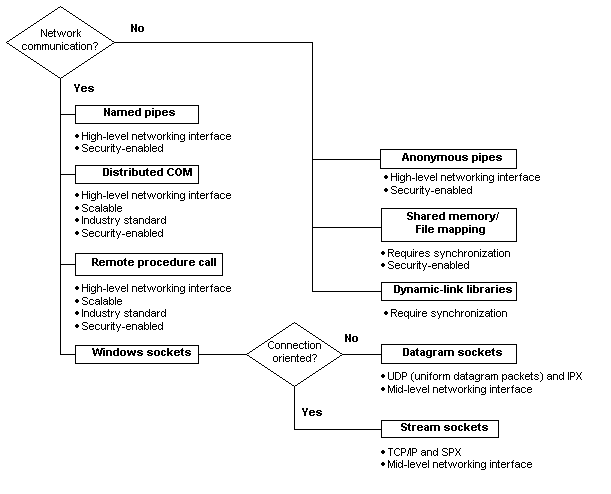
For an application to take complete advantage of the features in the Microsoft® BackOffice® environment, you must design it to communicate with other applications as well as with components within BackOffice. Typically, cooperating and communicating applications can be categorized as clients or servers. A client is an application or a process that requests a service from some other process. A server is an application or a process that responds to a client request. Many applications act as both a client and a server, depending on the situation. The process of communication between two or more applications, regardless of their client/server status, is called interprocess communications (IPC).
Before you decide which IPC mechanisms to use in the development of your application, you should determine whether:
Many IPC mechanisms, such as dynamic-link libraries and shared memory, are implemented only on the local system. Other IPC mechanisms, such as distributed COM (DCOM) and remote procedure calls (RPCs), find their primary functionality across networks and between different computer systems. Each IPC mechanism has unique features that singularly describe it, and which you should consider during the development of your application.
Considerations for choosing the appropriate IPC mechanisms are shown in the following diagram.

The following topics describe the specific IPC mechanisms you can incorporate into your application as you develop it for the BackOffice environment.